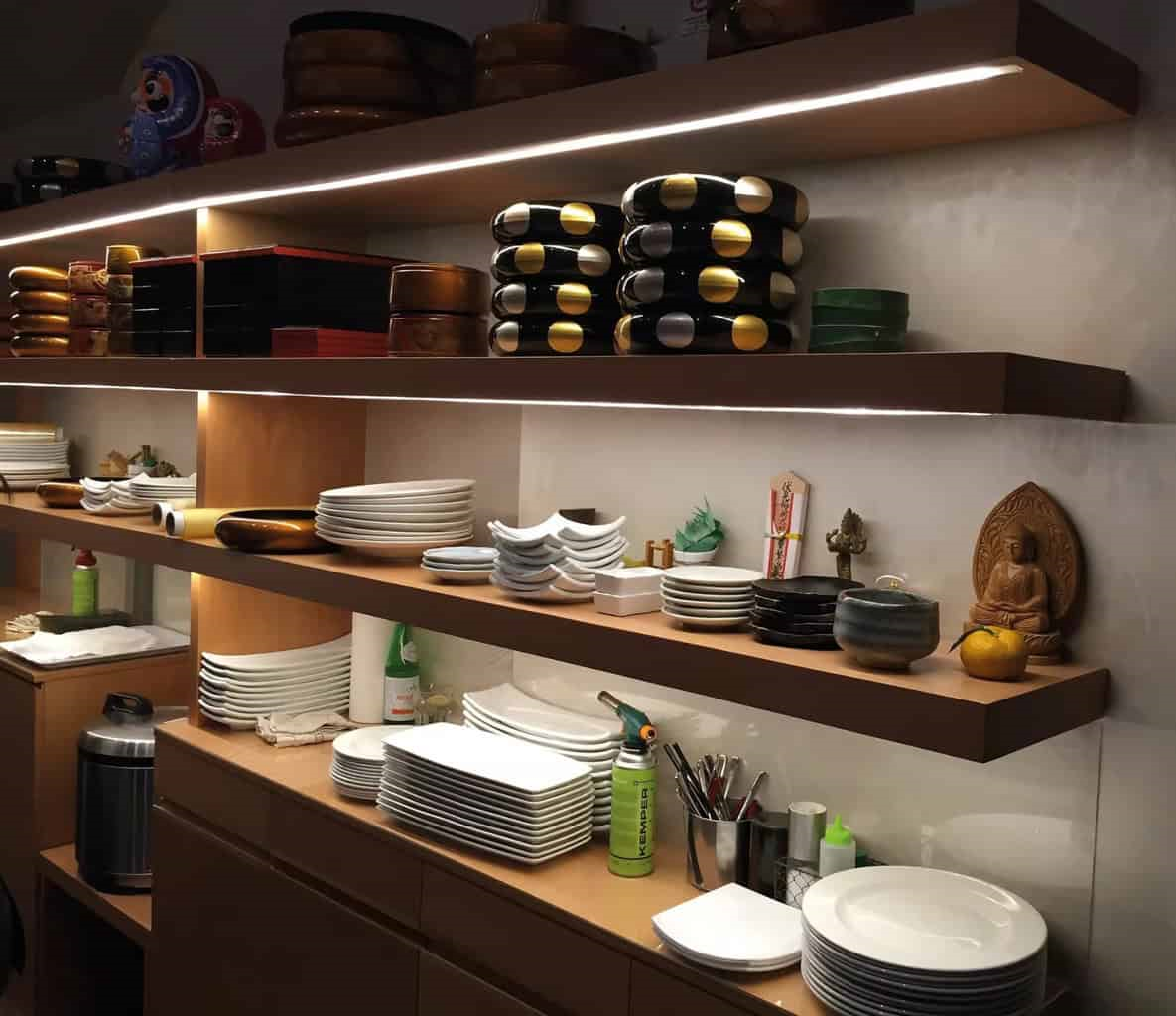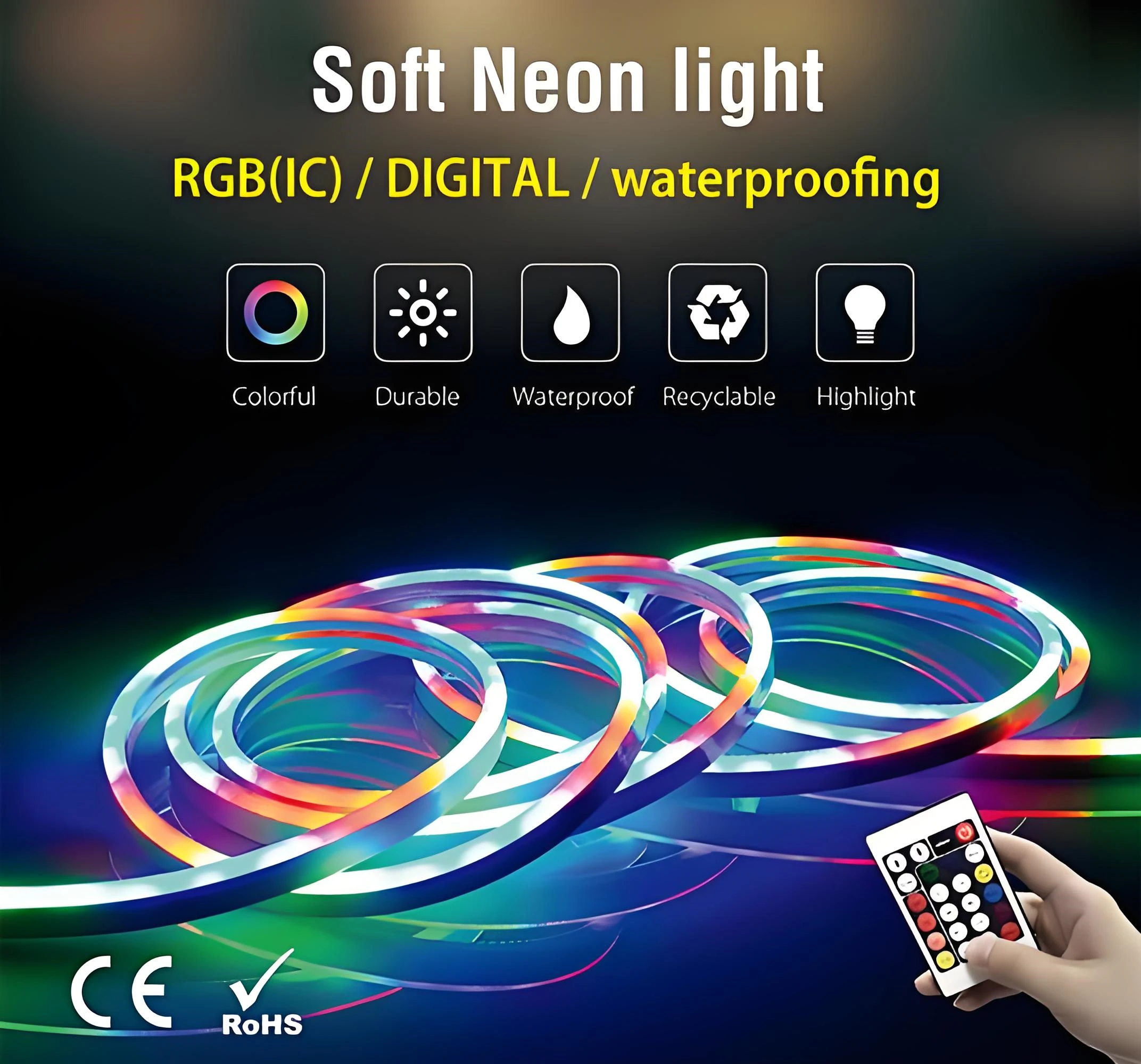LED strip lights have revolutionized the way we think about LED lighting, and these versatile and energy-efficient LED linear lighting solutions are suitable for a variety of applications. However, one of the most common questions when it comes to installation is how to figure out the right wiring. Should you choose to wire LED strip lights in series or parallel, or a combination of both?
Series and parallel are the two basic ways to wire LED strips, and choosing the appropriate method depends on the specifics of your lighting project and your expectations for its end result. This guide will cover both series and parallel circuits and their respective advantages and disadvantages. Please bear with us as we read through this article, and properly wiring ing LED strip lights or even other LED lights will be simple and easy to understand.
What is a series circuit?
Series circuits are one of the simplest forms of circuits that can be constructed and are often referred to as “daisy chains” or “loops.” Series circuits are sometimes referred to as “current coupled” because the total current will flow through each component in the circuit.
It is called a series circuit because the components are arranged in a chain or sequence, one after the other, so that the current can only flow along one path. In simple terms, this means that the current follows one path from start to finish, with the anode (positive) of the second LED connected to the cathode (negative) of the first LED. See the diagram below for an example:
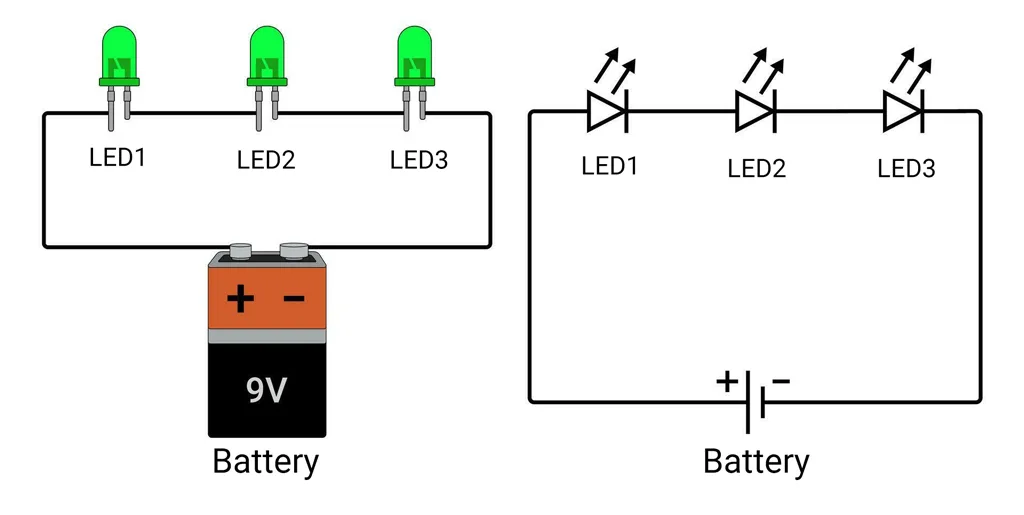
A series circuit is connected as shown, with the positive output of the driver connected to the positive terminal of the first LED, followed by a connection from the negative terminal of that LED to the positive terminal of the second LED, and so on, up to the last LED in the circuit. Finally, a connection is made from the negative terminal of the last LED to the negative output of the driver, thus forming a continuous loop or daisy chain.
The key points of a series circuit are as follows:
1. Single Path: In a series circuit, there is only one path for the current. If you were to draw a line from the positive terminal of a power source (such as a battery) to the negative terminal, you would pass through each LED or other component in the circuit one by one.
2. Constant Current: Because there is only one path, the same current will flow through all the LED components in the circuit. This is one of the most important characteristics of a series circuit.
3. Voltage Distribution: The total voltage required is the sum of the forward voltage of each LED, which simplifies the power requirements. In a series circuit, the total voltage provided by the power supply is distributed among the LEDs. Each LED receives a portion of the total voltage that is proportional to its resistance.
4. Additional Resistance: The total resistance of a series circuit is equal to the sum of the resistance of each component. Therefore, if more components are added, the total resistance of the circuit will increase, thus reducing the total current flowing through the circuit.
5. Dependent Function: A disadvantage of series circuits is that if one LED fails (e.g., burns out), the entire circuit is disconnected and all LEDs stop working. This is because the path of current flow is interrupted.
What is a parallel circuit?
Parallel circuits typically use more cable than series circuits but allow the current to be distributed equally among the LEDs, meaning that there are multiple paths for the current to flow and each LED is connected independently to the power supply. Series circuits supply the same current to each LED, while parallel circuits supply the same voltage to each LED, and each LED receives a current equal to the total output current of the driver divided by the number of LEDs in parallel.
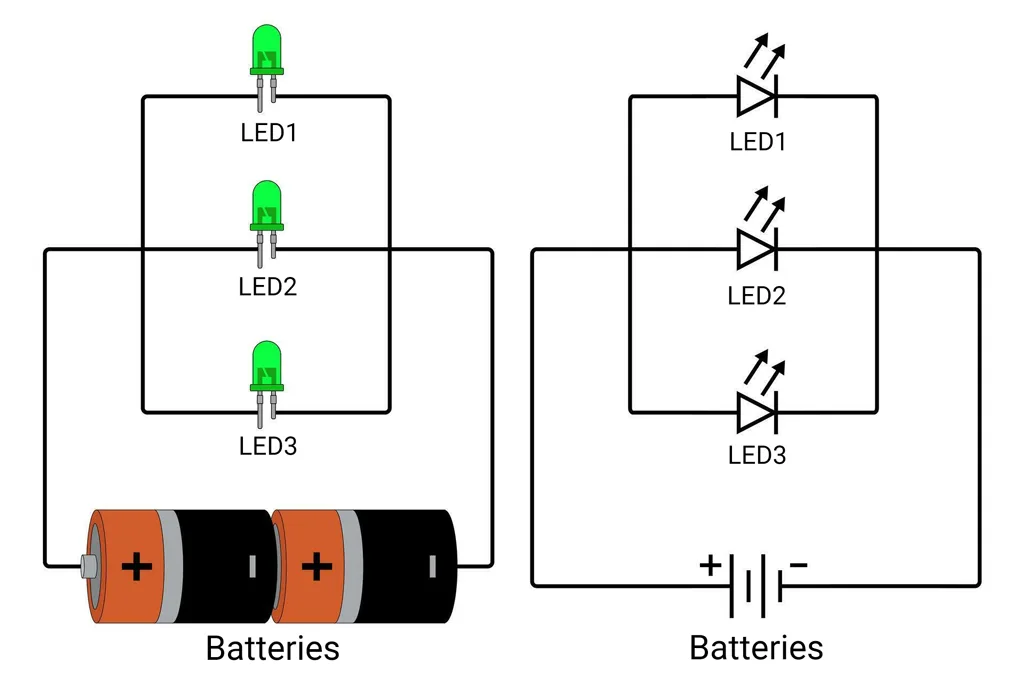
In a parallel circuit, the positive terminals of all LEDs are connected together and return to the positive output of the LED driver, and the negative terminals of all LEDs are connected together and return to the negative output of the driver.
Key points of a parallel circuit:
1. Multiple Paths: In a parallel circuit, there are multiple paths for the current. Each LED is independently connected to the positive and negative terminals of the power supply.
2. Constant Voltage: One of the most important characteristics of a parallel circuit is that the voltage across each LED is the same. This means that each LED in the circuit receives its full voltage from the power supply.
3. Current Distribution: The total current supplied by the power supply is distributed among the LEDs. The current that each LED receives from the power supply is proportional to its resistance. The total current is the sum of the currents passing through each LED path.
4. Reduced Resistance: When resistors are connected in parallel, the total resistance of the circuit decreases. This is because adding more paths allows more current to flow.
5. Independent Operation: Each LED in a parallel circuit operates independently. If one LED fails, it will not affect the operation of the other LEDs. This is a significant advantage of parallel circuits over series circuits.
Both Series-Parallel Circuits
As the name suggests, a series-parallel circuit is a combination of series and parallel circuits, combining elements of each. This circuit is neither a simple series nor a simple parallel circuit. Instead, it combines elements of both. In a series-parallel circuit, certain parts are connected in series and certain parts are connected in parallel.
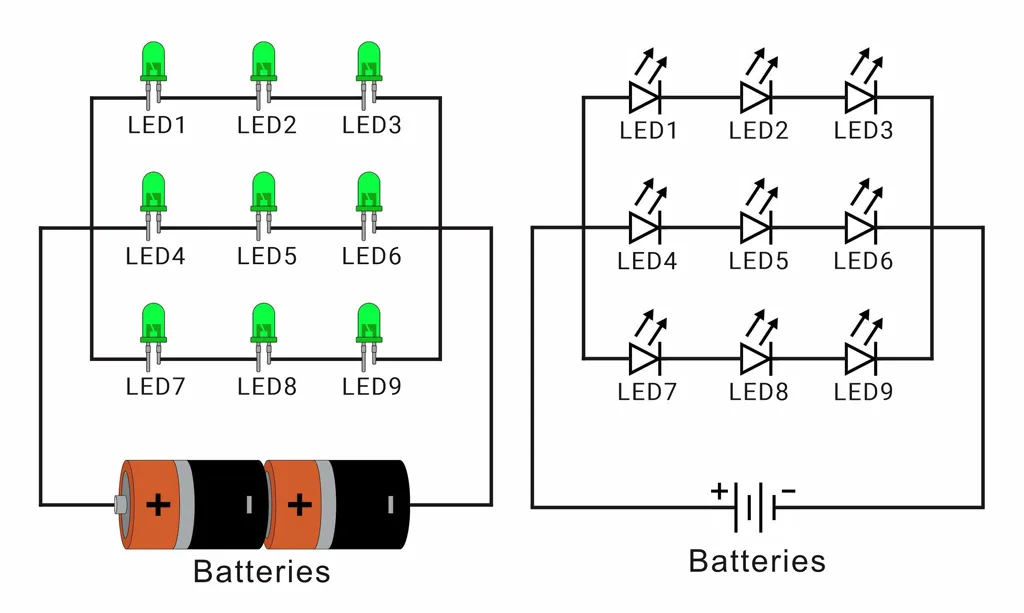
As we can see from the diagram above, the circuit has 3 groups of LEDs connected in parallel, and each group of LEDs is connected in series with 3 LEDs. This series-parallel circuit allows for more complex designs, greater flexibility, and the advantages of both series and parallel circuits.
LED strip lights are made up of these series-parallel circuits. LED strip lights are very long, but in reality they are made up of many parallel branches, each consisting of 3 LEDs in series, for LED strips rated at 12V (or 6 LEDs in 24V LED strips). In other words, 3 LEDs are connected in series, but 3 LED groups are connected in parallel. This is why we can simply cut the LED strip in 3 LED intervals.
How to wire LED strips in series?
Wiring two or more LED strips in series is probably the most logical and straightforward method. You can think of this series connection as simply wiring one end of the LED strip to the next LED strip. If you only need to wire a short distance, you may need some handy solderless connectors. For longer LED strip runs, you’ll need to watch out for voltage drops.

This series connection is a quick and easy method because it doesn’t require you to create another separate power line connection. You simply jump between the two LED strip sections.
The downside is that this can cause an additional voltage drop, resulting in less light output from the LED furthest from the power supply. The reason for this is that wiring LED strips in series only allows current to flow through one path, which can act as a bottleneck for current flow, reducing the amount of voltage and current reaching the farther LED strip section.
How to wire LED strips in parallel?
An alternative to wiring multiple LED strips together is to connect them in parallel. This method creates separate running sections of LED strip, each connected directly to the power supply.

This parallel connection reduces the amount of current that needs to flow through any given LED strip section because they are connected directly to the power supply. It significantly reduces the likelihood of voltage drops.
The main disadvantage of this connection method is that it requires more wiring work. The main difficulty is that most power supplies only have one positive and one negative output wire, so to wire it to multiple LED strip sections, you need to split that output into multiple wires. To do this, you can use specialized wire splitter terminals.
Another difficulty is that some LED strip sections may be located away from the power supply. In these cases, you may find that not only do long wires add expense, but they need to be of a large enough gauge. Otherwise, the voltage in the wire will drop before it reaches the LED strip.
Myths About Wiring LED Strip Lights in Series and Parallel
Many manufacturers and customers use the term series connection to describe connecting multiple LED strip sections end-to-end or daisy-chaining them. But strictly speaking, when analyzed from an electronic circuit technology perspective, the term series is completely incorrect when referring to this configuration. That’s why we introduced series and parallel electronic circuits in the previous sections.
Why do we want to clarify this one myth? Because LED strip lights are made up of series-parallel branch circuits (which we also covered in the previous section on series-parallel circuits). If you cut an LED strip, you are simply reducing the number of branches connected in parallel. When you wire the LED strip end-to-end (daisy chain), you are simply adding additional parallel branches.
A true electrical series connection will change the required input voltage. However, when people talk about wiring LED strips in series, they are almost always wiring the LED strips end-to-end. When connected in this way, the LED strip input voltage remains constant. In other words, you can use a 12V power supply to power a 1-meter length of 12V LED strip and daisy-chain another 2-meter section of 12V LED strip.
In any case, this series and parallel connection of LED strips is not entirely correct, but it does observe some basic principles of series and parallel circuits, so it’s not entirely wrong. This is closely related to the design of the LED strip and its corresponding electronic principles, the LED power supply.
How should I wire LED strip lights, and which is better?
The method of choosing to wire LED strip lights in series or parallel depends on a number of factors related to the specific lighting project. There are advantages to both methods, and there are benefits to using them in different situations.
LED strips wired in series are usually used for simple installations that do not require the strips to be stretched over long distances (no more than 10 meters). This is ideal when LED strips are installed in smaller areas. A series connection is also beneficial when you want to control the light intensity throughout the installation using a single power supply. However, be aware that this method may result in a voltage drop, especially at the ends of longer strips, which can lead to uneven lighting.
LED strips connected in parallel are more suitable for creating large-scale lighting installations. Where the LED strips need to cover a larger area, such as a large living room, hallway, or building facade. In this configuration, each LED strip is connected directly to the power supply, which minimizes voltage drop and ensures even illumination over the entire length of the strip. Wiring RGB LED strips in parallel is also recommended when planning to use RGB strips, as each LED section of an RGB strip can display the full color spectrum independently without loss of light intensity.
Can I mix series and parallel wiring in an LED strip installation? Yes, you can. But you will need careful planning and precise calculations to ensure the correct voltage and current distribution, and you will also need to configure the right wattage and number of power supplies. In complex lighting projects, it is common to use a mix of series and parallel wiring for LED strips.

Therefore, the final choice of wiring method depends on the specifics of the installation. If the project requires long segments of LED strip with even illumination, parallel connections will be the better choice. On the other hand, in smaller, more compact installations, a series connection may be sufficient and even more economical. In both cases, proper selection of power supplies and wiring to ensure a stable power supply and long life of the LED lighting are essential requirements.
In Conclusion
Whether you choose to wire LED strips in series or parallel circuits ultimately depends on your specific project requirements. Series circuits are simple, cost-effective, and energy efficient for smaller installations, while parallel circuits offer greater reliability and consistent brightness for larger projects.
Whether you’re a project owner, professional installer, or DIY enthusiast, taking the time to evaluate your power needs and wiring configuration will ensure that your LED strips will shine for years to come.
SignliteLED is a China manufacturer specializing in producing high-quality customized LED strip lights, COB LED strip lights, and LED neon strip lights. If you need to buy LED strip lights, please contact us.


